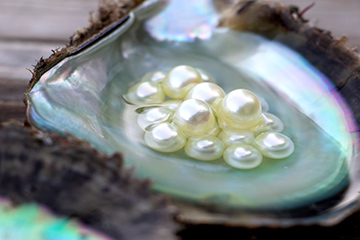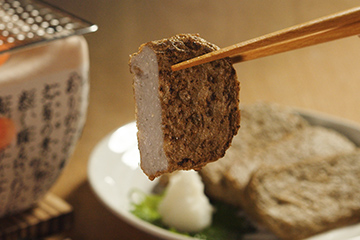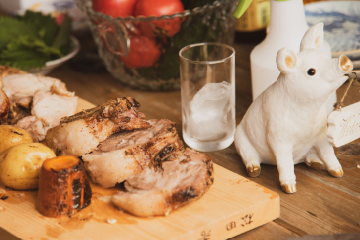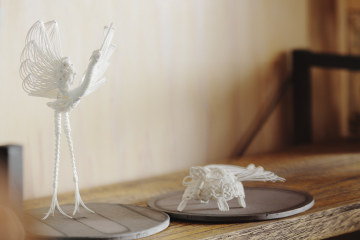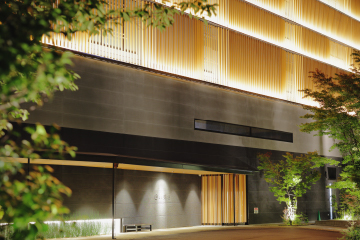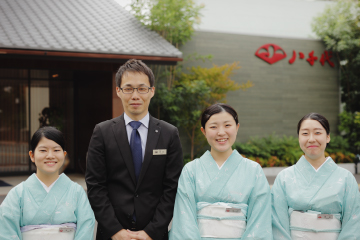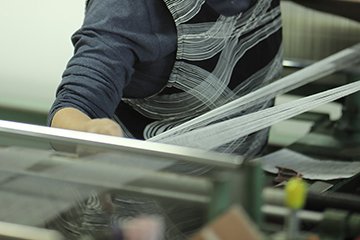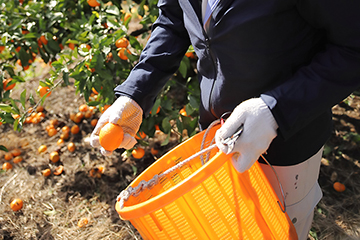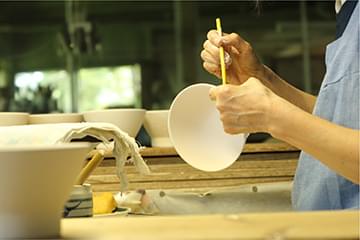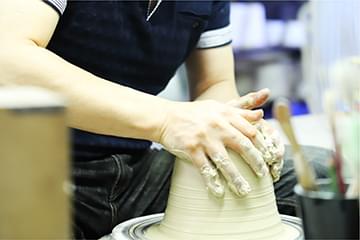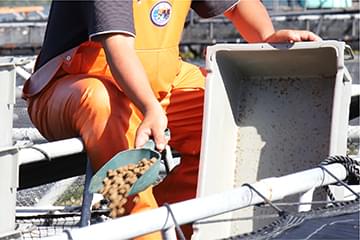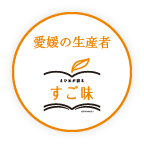Rustic, Warm, and Solid— Into the Enduring World of Tobe Ware Vol. 2 Joshua Koubou
Do you know pottery can be categorized as either earthenware or porcelain? They are made of significantly different materials—earthenware is made of potter’s clay, while porcelain is made of pottery stone. Tobe ware is one of the porcelain wares.
The “to” in “Tobe” stands for whetstone (toishi in Japanese). It is said that Tobe ware production began when Yasutoki Kato, the nineth lord of the Ozu Domain, ordered the development of porcelain using whetstone remnants, since the area produces whetstones suitable for porcelain. Tobe ware basically consists of white porcelain with indigo pigment. Due to their thickness, weight, and less breakable nature, Tobe ware come with their own anecdote of not breaking when thrown during marital disputes. We visited Joshua Koubou, a manufacturer of these traditional wares.
Joshua Koubou continues to create new products while still preserving tradition. Takenishi speaks calmly, they encountered relentless challenges to develop the Joshua blue pigment.

The Urge to “Create Something New”—Joshua Blue Was Born After Trial and Error
Joshua Koubou was originally established as Keisen-gama in 1966 by Takenishi’s father. Takenishi renamed it in 2001 and began leading its activities. He has had a pottery career for about 40 years.
After the collapse of the economic bubble, Joshua Koubou came to its turning point. With the entire pottery industry stagnated, Takenishi felt an urge to “create something new.”
Joshua is a name of a leader in the Old Testament. I was impressed by his mindset to conquer a new land. I was similarly determined to create unprecedented Tobe ware, so I named my workshop Joshua Koubou.
After much trial and error, “Joshua Blue” was developed about eight years ago. The deep blue gradation draws attention. Takenishi told us the details of the birth of this color.
There is an inn in Dogo, called CHAHARU Hanare Dogo Yumekura. I was asked to make their tableware and interior decor items for their guest rooms, and I created about 10 different types of pottery with various colors and designs. Then, a guest of the inn visited our workshop and said, “I’d like to buy the blue tableware.” More and more people came to buy the same tableware, and I intuitively felt, “This is it!” We started with one design and later added more variations with different shades and painting patterns to obtain today’s product lineup. We used to make many wares in other colors, but now we produce enough Joshua Blue products that when we open the door to the kiln, the inside appears entirely blue.

Shaping porcelain clay on a rotating potter’s wheel is a very important process to make the base of the ware. Tobe ware can be made by pouring clay into templates or by shaping slabs of clay (in the slab building method), but Joshua Koubou products are mostly wheel thrown.

Wiping off excess clay after biscuit firing. Five staff members including Takenishi work at Joshua Koubou. “How do we create good products while fully utilizing the abilities of the staff? I have many things to consider,” says Takenishi.

Spraying gosu pigment on a clay body with a spray gun. A beautiful gradation appears once completed. “Cobalt, a component of gosu blue, is naturally blue with a high chroma. I add different materials to form a greenish deep blue that I like.”

Longing to Create Products That Delight at First Glance
Takenishi’s Joshua Blue is a deep and attractive color. How the materials are mixed and the wares are fired can result in completely different shades of blue. What does Takenishi value during the production process?
Creating products that excite viewers and prompt a “wow” reaction from them. Each Joshua Blue product has a 7-to-3 ratio of blue to white. Adding white results in a soft appearance.
Indeed, the blue color seems to stand out more when some white remains, rather than when entirely blue.
Customers often tell us that our products are “beautiful no matter what food is placed on it.” I use them at home for various purposes, such as for side dishes, rice, noodles, and desserts, and they match everything. Blue complements other colors. Both yellow and red look good on blue. I think it may be a reason why blue exists. I’m pleased when customers put different foods on our products and find they look better than usual.
Takenishi pioneered a new world of Tobe ware with Joshua Blue. He seems to be continuing his endeavor to create something new.
Tobe ware is traditionally considered to be for daily use, but I’d like to try making high-quality products as well. So I continue with my activities as an individual craft potter. I’d like to try new things in my artistic activities and utilize the results for our workshop production. I pursue products that are not affected by trends and that will endure forever.

Spraying gosu pigment on wares with a spray gun stresses the arm, and Takenishi couldn’t even hold chopsticks for a while due to tenosynovitis. He instructs staff to reduce the strain, but obtaining a stable color and learning designs can take at least four or five years. However, he remains patient since their products are handmade.
Takenishi is deeply devoted to handmade products, regardless of the labor-intensive tasks and staff training. He will undoubtedly continue to create diverse products that will decorate the dining tables of many families. However, his policy for manual production will never change. The warmth of wares handmade by the artisans of Tobe Town are worth feeling with your own hands.
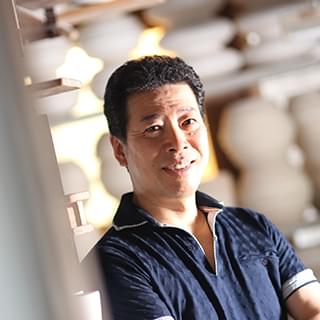
TEL: +81-89-956-0680
https://www.joshuakoubou.jp/
https://www.facebook.com/234207259969980/
https://www.instagram.com/joshua_koubou/






